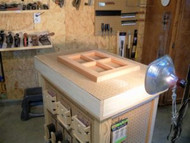Just Smaller Scratches
10 01 2012
We have been spending some more quality time with RJ Stroman, President of 2Sand.com. (and other sanding supply sites, but that is for a future blog post) RJ has been answering customer questions about some of the technical aspects of sanding. The question at hand today is "What grit should I start with, and how far 'down' the scale should I jump as I work through the grits?"
RJ: "Well, the answer to the first part depends a bit on what you are starting with, and what you need to accomplish. If you are using sandpaper to actually shape a piece of stock like rounding the corner of a piece of ply, you may want to begin with 80 or even 60 grit to remove material very quickly. If you just need to 'scuff' a surface to insure a good bond when painting, then you wll need to begin (and likely end) with a much finer grit."
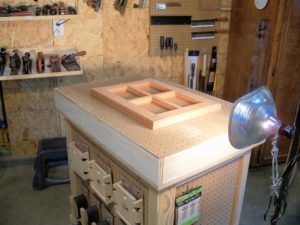
Keep in mind that sanding does remove material completely, which is where the dust comes from, but no grit actually leaves a smooth surface. What you are really doing is creating smaller scratches with each finer grit of sandpaper. Setting a bright light at a low angle to your work will highlight scratches in your work. And if you look carefully, as you work through the grits you will see what I mean.
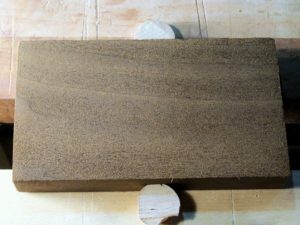 Here is a part that had obvious tool marks to "sand smooth". Starting with 80 grit on this soft wood, the tools marks can be eliminated quickly, but the surface is certainly not smooth. The 'fuzzy' look to the surface is actually a series of relatively deep scratches in the surface. They are random and uniform so you do not see them as individual marks, but they are there.
Here is a part that had obvious tool marks to "sand smooth". Starting with 80 grit on this soft wood, the tools marks can be eliminated quickly, but the surface is certainly not smooth. The 'fuzzy' look to the surface is actually a series of relatively deep scratches in the surface. They are random and uniform so you do not see them as individual marks, but they are there.
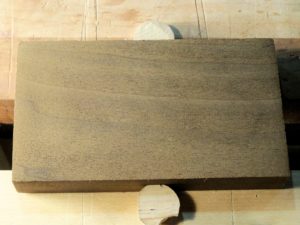 How far down the grit scale should we move for the next pad? Well, just as the 80 grit have to level the surface of the planer marks, we now want to remove the 80 grit scratches completely, which will leave finer scratches behind. On this soft material, we can skip two or even three numbers, so we drop directly to 150. If it were hard maple, maybe we would need to go to 120 or even 100, otherwise, we would be sanding for some time to reach the bottom of the 80 grit scratches. Note that this looks 'smoother', but there are still scratches.
How far down the grit scale should we move for the next pad? Well, just as the 80 grit have to level the surface of the planer marks, we now want to remove the 80 grit scratches completely, which will leave finer scratches behind. On this soft material, we can skip two or even three numbers, so we drop directly to 150. If it were hard maple, maybe we would need to go to 120 or even 100, otherwise, we would be sanding for some time to reach the bottom of the 80 grit scratches. Note that this looks 'smoother', but there are still scratches.
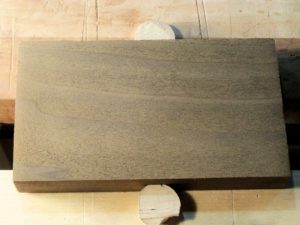 Even at 220, the surface being left is still just a pattern of scratches, but the pattern is so small and the scratches so shallow that the eye no longer sees them as individuals, and sees only the 'sheen' of the light reflecting off the myriad of shallow troughs.
Even at 220, the surface being left is still just a pattern of scratches, but the pattern is so small and the scratches so shallow that the eye no longer sees them as individuals, and sees only the 'sheen' of the light reflecting off the myriad of shallow troughs.
So choose your starting grit based on the task and material at hand, and drop two or three steps between grits. Just remember to have all the grits on hand. Stepping down too far will means a lot of time trying to remove enough material to get to the bottom of the previous scratch pattern."
As always, we encourage your comments and questions! You can reach us by commenting here, on our Facebook page, or via Twitter. Let us know what you think! -2Sand.com

